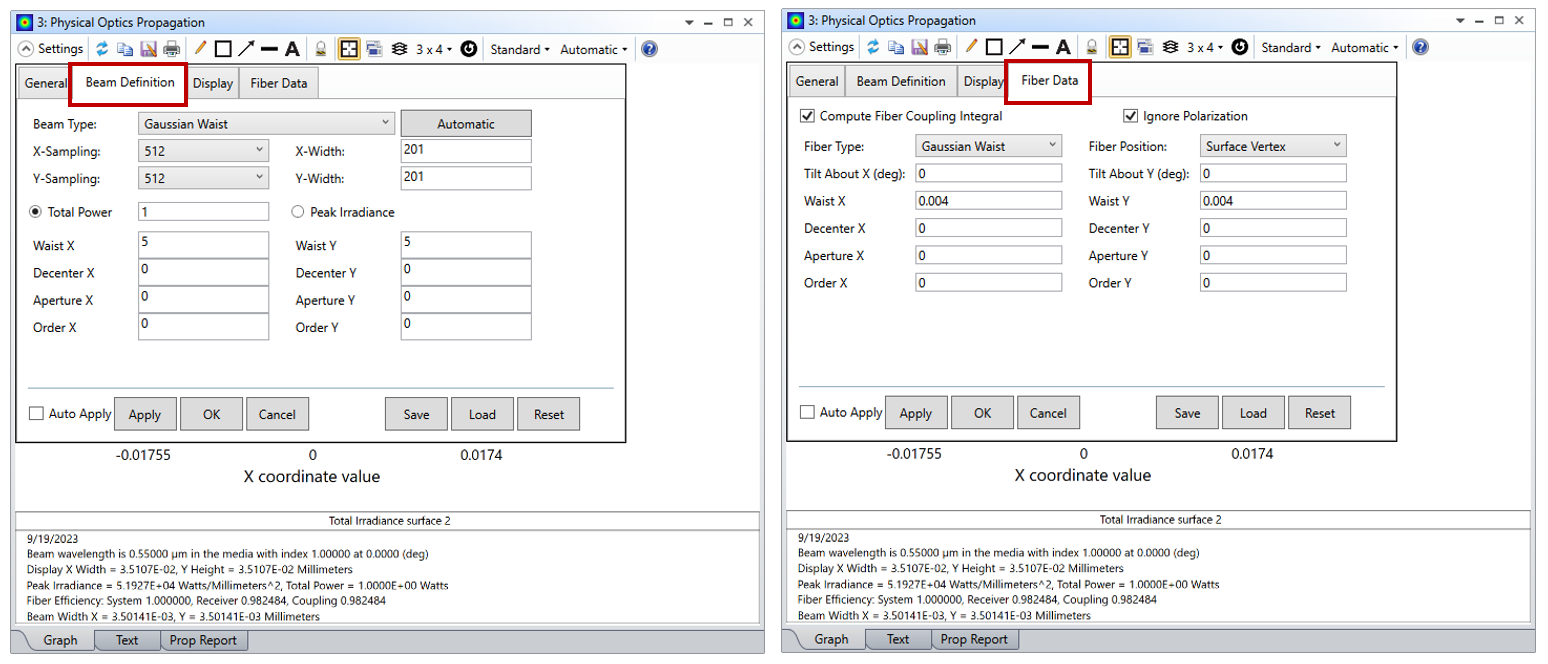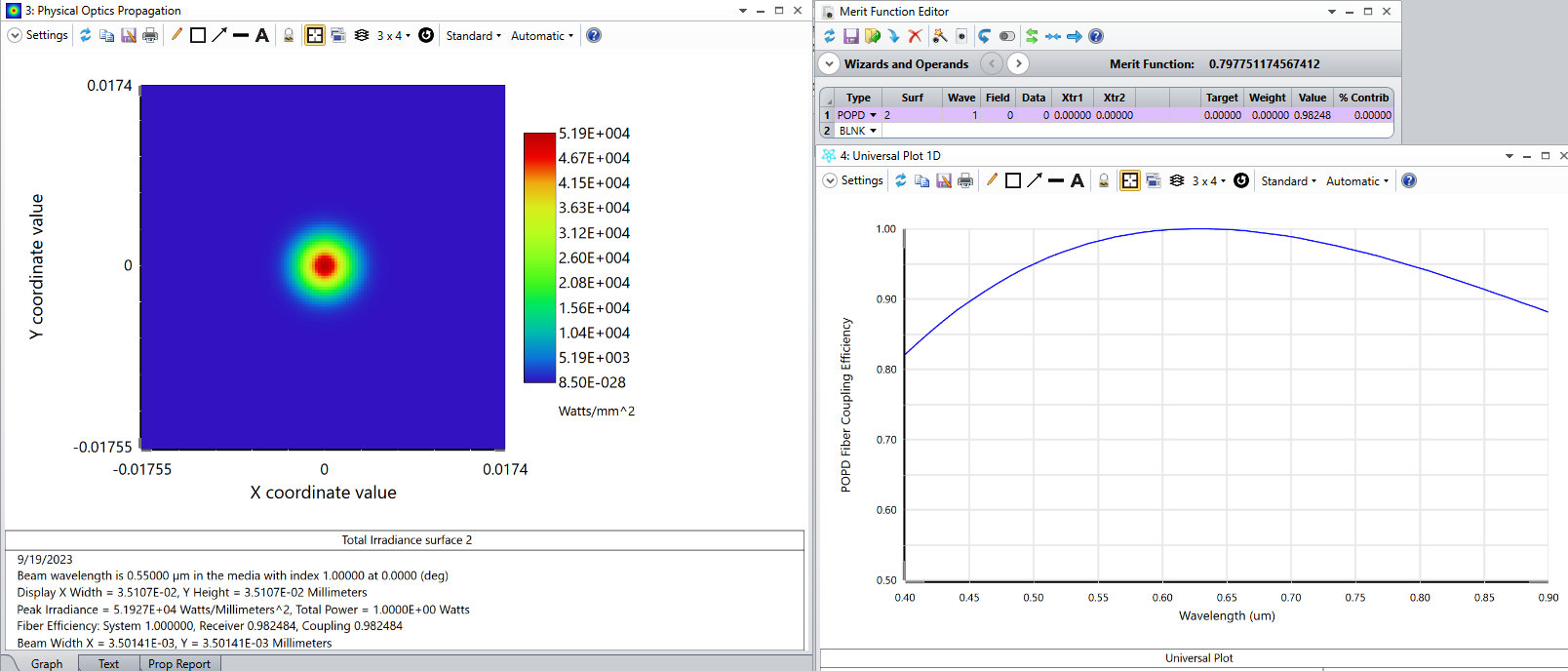Hi,
I’m trying to investigate the effect of different parameters on fiber coupling (receiving fiber only), such as focal length of the injection lens, wavefront aberrations, fiber NA, etc…
The system is a 19mm parallel beam, a paraxial lens, and a single mode fiber at the focal plane.
It seems that the wavelength value has no effect on the fiber coupling efficiency (FICL operand). This seems not physical to me…
Any idea?
Thanks







